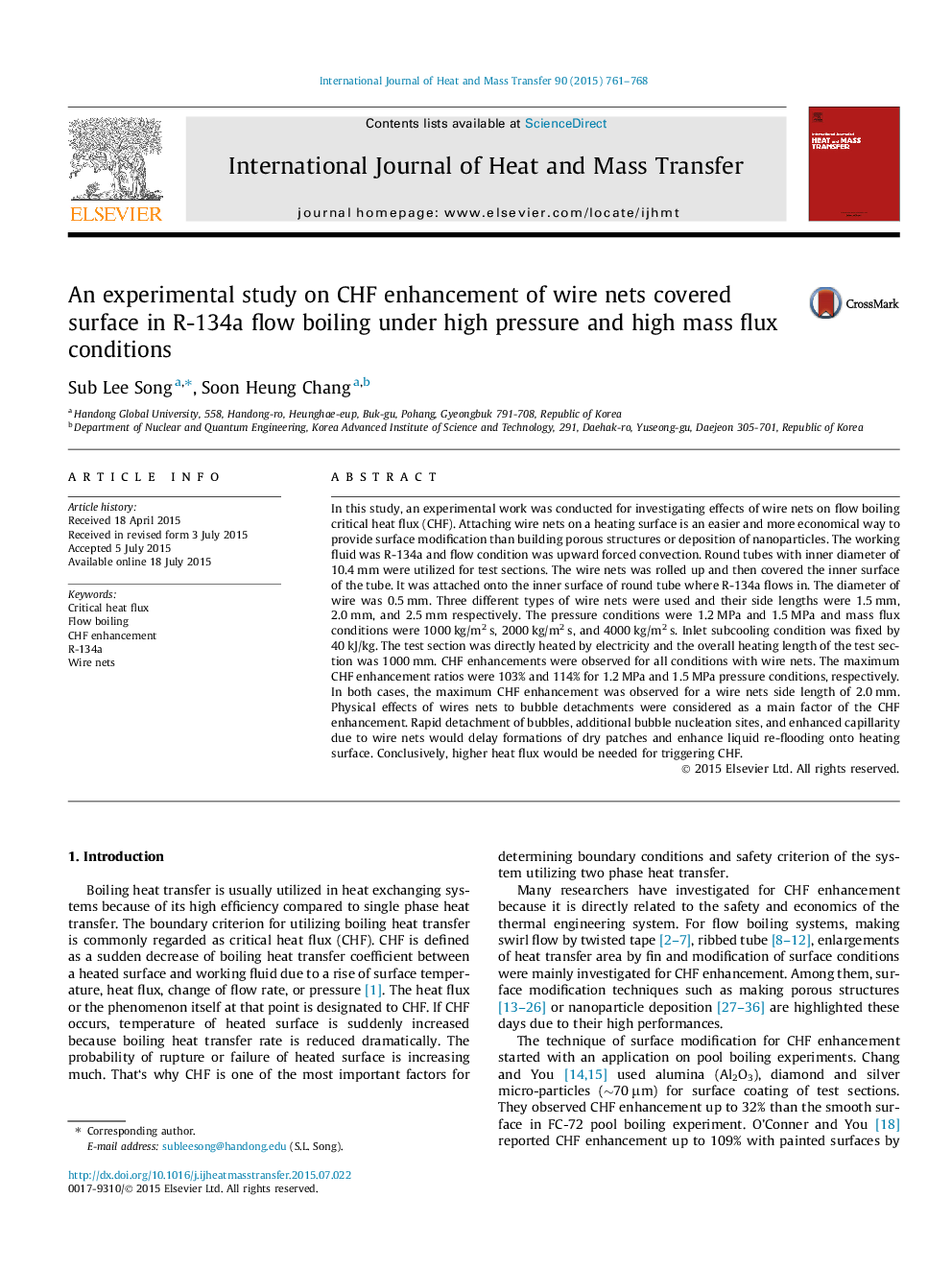| Article ID | Journal | Published Year | Pages | File Type |
|---|---|---|---|---|
| 7056535 | International Journal of Heat and Mass Transfer | 2015 | 8 Pages |
Abstract
In this study, an experimental work was conducted for investigating effects of wire nets on flow boiling critical heat flux (CHF). Attaching wire nets on a heating surface is an easier and more economical way to provide surface modification than building porous structures or deposition of nanoparticles. The working fluid was R-134a and flow condition was upward forced convection. Round tubes with inner diameter of 10.4Â mm were utilized for test sections. The wire nets was rolled up and then covered the inner surface of the tube. It was attached onto the inner surface of round tube where R-134a flows in. The diameter of wire was 0.5Â mm. Three different types of wire nets were used and their side lengths were 1.5Â mm, 2.0Â mm, and 2.5Â mm respectively. The pressure conditions were 1.2Â MPa and 1.5Â MPa and mass flux conditions were 1000Â kg/m2Â s, 2000Â kg/m2Â s, and 4000Â kg/m2Â s. Inlet subcooling condition was fixed by 40Â kJ/kg. The test section was directly heated by electricity and the overall heating length of the test section was 1000Â mm. CHF enhancements were observed for all conditions with wire nets. The maximum CHF enhancement ratios were 103% and 114% for 1.2Â MPa and 1.5Â MPa pressure conditions, respectively. In both cases, the maximum CHF enhancement was observed for a wire nets side length of 2.0Â mm. Physical effects of wires nets to bubble detachments were considered as a main factor of the CHF enhancement. Rapid detachment of bubbles, additional bubble nucleation sites, and enhanced capillarity due to wire nets would delay formations of dry patches and enhance liquid re-flooding onto heating surface. Conclusively, higher heat flux would be needed for triggering CHF.
Related Topics
Physical Sciences and Engineering
Chemical Engineering
Fluid Flow and Transfer Processes
Authors
Sub Lee Song, Soon Heung Chang,
